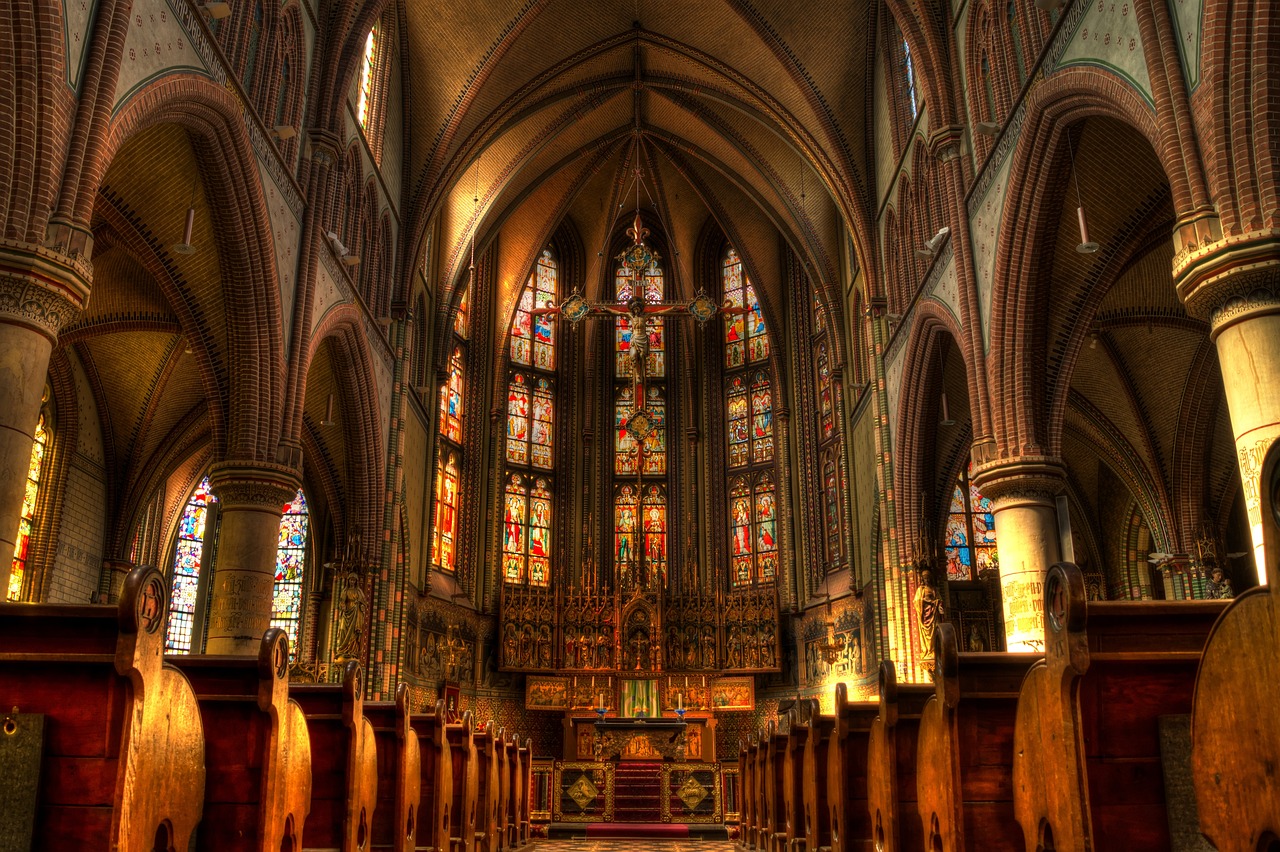
Trump’s Problem with Race and Religion
Steven K. Green
Image by Rudy and Peter Skitterians from Pixabay
The images have already become iconic: militarized police using tear gas and rubber bullets to clear peaceful protesters from Lafayette Park, positioned across from the White House, so that President Trump and his entourage could walk to the historic St. John’s Episcopal Church for a photo op where the President is seen manhandling the Bible in front of cameras. The context of this encounter is important, because minutes earlier Trump had delivered an impromptu Rose Garden address about being the “law and order” President who is ready to respond to demonstrations protesting the brutal killing of George Floyd under the knee of a white police officer. Rather than sympathizing with the protesters’ frustrations about racial injustice, Trump wanted to portray the image of a strong-man President, and so he chose, inexplicably, a photo opportunity in front of a church to telegraph a message to his political base, which includes conservative evangelicals who elected him into office.
The fact that Trump has a problem with race has been evident long before his election as President and has continued into his presidency through a host of statements and actions — including calling Latino immigrants rapists and murderers, marginalizing a federal judge for being of Mexican descent, and attempting to ban Muslims from entering the United States. Trump’s racism is sufficiently concerning on its own, but now, facing criticism for his insensitivity to racial issues, Trump has sought cover from what he considers to be his loyal base of support: church-going Americans. So, Trump chose a church backdrop to deflect attention from his deaf response to a racial crisis, without understanding the commitment of St. John’s and thousands of other churches to racial equality and justice.

President Donald J. Trump in front of St. John’s Episcopal Church on June 1, 2020 / Official White House Photo by Shealah Craighead
Trump’s expropriation of St. John’s as a backdrop came without permission of the Episcopal Diocese of Washington, D.C., drawing outrage from the presiding bishop. The following day, Trump and his wife visited a Catholic shrine for another photo op — again, uninvited — drawing the outrage of the Catholic bishop (at least Trump is an equal opportunity offender). More recently, Trump held a roundtable, reportedly for the purpose of discussing race and policing, in the comforting confines of Gateway Church, an evangelical megachurch in Dallas. Gateway’s pastor, Robert Morris, serves on Trump’s evangelical advisory board. Despite the billing, the President’s four-point plan provided little substance for addressing the issues of racial injustice that have been gripping the nation for weeks. Again, however, Trump sought a church backdrop as both a comfort zone and a way to signal to his supporters that there is a particular “Christian” perspective on these matters, one that he represents and protects.
The political use of religion, which has long defined our nation’s history, has always been at tension with the Founders’ design and concern about avoiding the corrosive effects of mixing church and state.
Many presidents have sought the comfort and support of religion in times of crisis — Richard Nixon reputedly kneeled in prayer with Billy Graham as the Watergate crisis loomed. But this is different. Trump is not a particularly religious man or a regular church attendee.1Kenneth D. Wald & Allison Calhoun-Brown, Religion and Politics in the United States 148–49 (Rowman and Littlefield 8th ed. 2018). He chose an evangelical vice president to shore up support from that community, conveniently allowing him to play golf on Sundays. Trump is awkward about religious matters — and apparently privately dismissive of them — but is sufficiently astute politically to understand the advantages of appealing to the white, evangelical base. If Trump had gone to St. John’s for personal religious solace during a moment of national crisis, I would have given him the benefit of doubt, but there was no evidence of humility or introspection, only defiance.
Trump is not the first president to employ religious rhetoric or to otherwise exploit religion for political cover or gain (how far back shall we go?). Yet even our least religious presidents appreciated that there are lines that should not be crossed. Ronald Reagan reputedly attended church three times during his presidency and his wife dabbled in astrology, and, although critics claimed he pandered to religious conservatives, he at least treated religion and religious institutions with respect.2Wald & Calhoun-Brown, supra note 2, at , 198–99. And as frustrating as George W. Bush was with his eagerness to lower the church-state wall with his Faith Based Initiative, no one questioned his religious sincerity. When Bush used religious rhetoric, it usually came from the heart (though, still with an awareness of its political benefits).3Id. at 157, 207–08. The political use of religion, which has long defined our nation’s history, has always been at tension with the Founders’ design and concern about avoiding the corrosive effects of mixing church and state. Religiously charged issues have always been low-hanging fruit for politicians, and, to an extent, the political use of religion has become so commonplace that most people have become desensitized to it. That does not mean that we should give it a free pass.
Here, we can learn from the wisdom of the nation’s Founders about the dangers associated with the government’s misuse of religion. Writing in 1785 in opposition to a proposal to reinstate a religious tax in Virginia, James Madison warned about the threat to the integrity of religion from civil authorities: “that the Civil Magistrate . . . may employ Religion as an engine of Civil policy . . . [was] an arrogant pretension . . . [and] an unhallowed perversion of the means of salvation.” Similarly, Thomas Jefferson asserted that attempts by civil authorities to influence “correct” religious opinions “tend only to beget habits of hypocrisy and meanness, and are a departure from the plan of the holy author of our religion.” In this context, the constitutional design of the Religion Clauses, and the idea of separation of church and state, were based on three compelling arguments.
First, civil officials lack the inherent authority to use religion for political gain. Madison used the term “jurisdiction” to describe how religious matters and opinions were to be “off limits” from government officials. Those “Rulers who are guilty of such an encroachment, exceed the commission from which they derive their authority, and are Tyrants,” Madison wrote.
The second concern that church-state separation was designed to address was to protect the independence and integrity of religious institutions. The Episcopal Diocese took a position supporting the protesters’ claims for racial justice — and later opposing Trump’s use of force to clear Lafayette Park — but an uninformed viewer of the event could easily have concluded that the church endorsed Trump’s actions. This is not improbable because, unfortunately, the history of this country is replete with examples of religious leaders willingly being compromised by the lure of a close association with the holders of political power.
Religiously charged issues have always been low-hanging fruit for politicians, and, to an extent, the political use of religion has become so commonplace that most people have become desensitized to it.
A third reason why we should be concerned when public officials appropriate religion for political gains is that it frequently leads to religious divisiveness and discord. Madison, among other Founders, worried about the effects on civil society engendered by religious factionalism, what he called “religious discord.” Madison believed that “the latent causes of faction” were sown by a “zeal for different opinions concerning religion [and] concerning government.” Such disagreements had “divided mankind into parties, inflamed them with mutual animosity, and rendered them much more disposed to vex and oppress each other than to cooperate for their common good.” Although Trump is not responsible for the modern politicization of religion, a phenomenon that arose in the 1980s, he has seen no reason to slow that trend and, in the minds of many commentators and scholars, has exasperated the tribalization of religion in the United States.4See David Domke & Kevin Coe, The God Strategy: How Religion Became a Political Weapon in America (Oxford University Press 2010); Andrew L. Whitehead and Samuel L. Perry, Taking America Back for God: Christian Nationalism in the United States (Oxford University Press 2020). American Christianity is divided along partisan lines as never before. In that the Founders feared the rise of political parties for their divisive effect on society, one can only imagine what they would have thought about the alignment of religion with those parties.
The President’s periodic, cynical appeal to religious constituencies for political gain is bad enough, but it has taken on an additional concern recently with the embroiling racial controversy. Rather than addressing issues of racial injustice and inequality directly, Trump has used religion to detract, deflect, and divide. Already having aligned religious perspectives with divisive policy perspectives, he has now mixed both with particular perspectives about race. To be a Trump-supporting evangelical now means agreeing with his views on how to address issues of racial inequality and injustice. I do not believe that all white evangelicals, or even all of those who otherwise support the President, agree with Trump’s views about race or about how to resolve this dilemma. But the problem is that Trump’s histrionics may create the impression among religious progressives and secularists that all or most evangelicals do agree with him. This exacerbates suspicion and divisiveness among religious communities, and it invites greater religious tribalization. In that situation, we all lose.
Trump could do well to read up on James Madison. Unfortunately, I do not think he will. ♦

Steven K. Green is the Fred H. Paulus Professor of Law and Affiliated Professor of History and Religious Studies at Willamette University in Salem, Oregon. He is the author of six books and over forty scholarly articles and chapters on church-state matters, and he regularly collaborates on amicus curiae briefs at the US Supreme Court.
Recommended Citation
Green, Steven K. “Trump’s Problem with Race and Religion.” Canopy Forum, July 12, 2020. https://canopyforum.org/2020/07/10/trumps-problem-with-race-and-religion/

